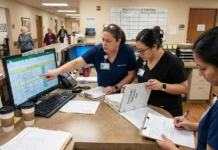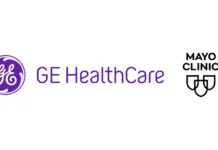In the summer of 2024, scientific research and news articles abound about the growing danger posed by deadly illnesses. The public’s interest in these outbreaks has generally been low, and the government’s reaction to the risks they represent has been somewhat ineffective. In comparison to the previous year, COVID-19 office and ER visits have more than doubled, and hospitalizations have almost doubled. Both the Mpox virus, which now seems to be airborne, and the N1H5 avian flu pandemic are spreading.
We must reframe the way we think about infectious illnesses. Five topics of concern were covered in a recent opinion piece in the journal Medicine.
A segregated feedback loop is the first and most significant area of concern.The majority of those carrying out the interventions use recommendations from governmental advisory committees to support their tactics; however, the panelists are often business representatives who also write the proposals. Over 6 million people were represented by labor unions, public health organizations, and patient and worker advocacy groups when they brought up these issues.
The CDC leadership recognized the need to broaden the range of expertise on these panels and set about implementing procedures that would eventually allow members of the committee to have more diverse technical backgrounds from their experiences on the HICPAC Isolation Guideline Workgroup. These procedures would be carried out in compliance with Federal Advisory Committee Act (FACA) regulations and guidance.
An Occupational Safety Professional was appointed to HICPAC during the August 2024 meeting, and as a result, the Isolation Precautions Workgroup now includes experts in the areas of prevention, industrial hygiene, long-term care/post-acute care, healthcare epidemiology, employee occupational health, aerosol science, and prevention.
Adopting enhanced barrier (EB) measures for assisted living facilities is a clear illustration of this poor decision-making. In a recent study on antibiotic resistance, the CDC found a five-fold rise in Candida auris infections and a 20% overall increase in hospital-onset infections. However, as patients harboring and sometimes infected with important pathogens, including C auris, are permitted “to participate in group activities,” EB precautions implemented in nursing homes have a detrimental influence on community control of C auris.
A second example is the healthcare industry’s slow and almost nonexistent suggestion of the best ways to prevent the transmission of illness via the air. The CDC leadership requested that HICPAC expressly address whether N95 masks should be used for all infections that travel via the air (new WHO nomenclature), having identified potential flaws in their proposed recommendations.
An over dependence on randomized controlled trials is the second area of concern.Too often, the absence of encouraging randomized controlled trials (RCTs) is used as a justification for not issuing strong recommendations. Public health treatments are often complicated, and subject adherence may play a big role. This is in contrast to pharmaceutical studies, when the intervention typically entails taking a pill once or twice daily. Furthermore, certain related or surrogate outcomes are employed in place of RCTs since they are unethical to conduct.
For instance, Jason Abaluck and colleagues’ widely cited research on masking in Bangladesh was really an education study meant to promote masking. There were more than 342 thousand participants in this large research. Masks were worn by the experimental and control groups. The COVID-19 symptom reduction difference was just 11.6%, but the masking compliance difference was a little 28.8 percentage points, which increased the effect of the favorable findings.
Despite the fact that the individuals did not wear N95 masks and that the study’s design made it more difficult to identify mask efficacy, critics often see it negatively. The decrease in COVID-19 symptoms would be anticipated to be more than 40% if N95s were utilized, and even greater if all patients in one trial arm wore masks while those in the other trial arm did not.
Important biases may also be present. For instance, a research by Loren Miller and colleagues that assessed decolonization and chlorhexidine washing in nursing homes may have included bias. A decrease was seen by the researchers in the main result of hospital transfers brought on by infections. On the other hand, the study’s control arm did not experience the same level of promotion and support of best practices as the intervention arm. A comparable hospital-based trial, the ABATE trial, did not reduce clinical cultures for MRSA or vancomycin-resistant enterococci in general hospital populations, while encouraging optimal practices in both arms. Therefore, it may be argued that a bias contributed to the favorable outcome of Miller and colleagues’ research, but the absence of this bias in the ABATE study led to a negative outcome.
The overuse of hand hygiene is the third area of concern. Patient screens and an understanding of carrier statuses are necessary additions to horizontal therapies. The US Veterans Health Administration found that by establishing near-universal monitoring and isolation measures, the prevalence of methicillin-resistant Staphylococcus aureus (MRSA) was much lower than that of methicillin-susceptible Staphylococcus aureus (MSSA), notwithstanding the importance of hand cleanliness. Our first reaction was to concentrate on hand sanitizer rather than masks and improving ventilation, even with SARS-CoV-2, an airborne virus.
The acceptance of the status quo or the normalization of deviation is the fourth area of concern. Deviance cannot be accepted as usual. This is what happens when we treat MRSA with a strategy that prioritizes responding to outbreaks above avoiding them. The apparent acceptance by society of the need to avoid SARS-CoV-2 infections and the long-term impairment resulting from prolonged COVID-19 has likewise occurred with COVID-19. This acceptance is shown by the fact that we only refer to an illness as “severe disease” if it causes hospitalization or death. This reduces the risk of infection in patients who do not end up in the hospital but who afterwards acquire long-term COVID, a chronic impairment that alters their quality of life.
Our opinions on the cost-effectiveness or burden of interventions constitute the fifth area of interest. All too often, in comparison to existing services, our present understanding of cost-effectiveness results in higher or comparable profitability levels. When it comes to their nation’s hospitals, a business model that prioritizes profits over patient care and safety is unacceptable, said US Senator Charles Grassley. At the moment, a lot of health care systems are for-profit, and they are being bought by private equity groups. A recent research found that worse quality was linked to higher rates of falls and central line bloodstream infections. It is important to keep in mind that the US government has calculated that the loss of one life equals $9.6 million, and that each year that a person of high quality dies is worth $500,000 to society.
In light of this, we need to completely rethink our approaches in order to curb the spread of airborne illnesses and create safe indoor settings. This entails installing UVC lighting fixtures, installing HEPA filtration, and monitoring CO2 levels to provide adequate indoor ventilation. The fact that talking and breathing might transmit illnesses via the air is the most crucial realization we must have. An aerosolizing process is not necessary. AND in order to provide better defense against catching airborne infections, N95 masks are needed. N95 masks have been shown to lower the exhaled viral load of SARS-CoV-2 by 98% in human volunteers. Therefore, 2-way masking works best.
Furthermore, understanding the patient’s microbiome ought to be our ultimate objective. Nevertheless, we should at least test patients for identified infections that are often encountered in the community until this is completed. The price of death and disability will be far higher if we do nothing.
The public and local government faith in public health has to be restored. Our society has to be ready to put up with certain limitations (such 2-way or universal masking in high-risk situations) and invest in immunizations, ventilation, and N95 masks. It must also report diseases brought on by significant pathogens and establish an enhanced screening program for carriers.


















